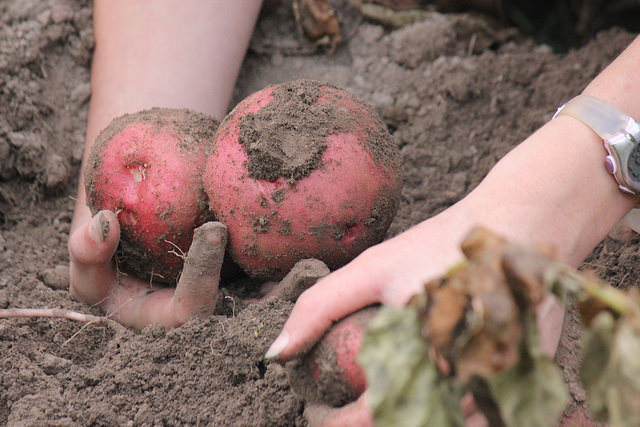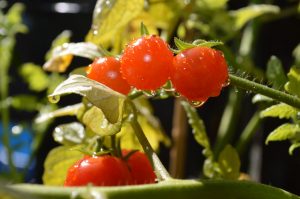A Comprehensive Guide to Growing Your Own Potatoes at Home
Introduction
Potatoes are a staple in many diets around the world, and for good reason. They are nutritious, delicious, and versatile. If you’ve ever wondered how to grow potatoes yourself, this guide will cover everything you need to know, from planting potatoes to harvesting your delicious homegrown spuds.
I. Planting Potatoes: Getting Started
Preparing Seed Potatoes
The first step in growing potatoes is understanding how to grow potatoes from potatoes. This process involves using seed potatoes, which are simply potatoes with developed eyes or sprouts. Choose healthy, certified seed potatoes from a reputable nursery or garden center to ensure they are free of diseases.
Chitting: Sprouting Your Seed Potatoes
Before planting, encourage your seed potatoes to sprout by placing them in a cool, bright location for 2-4 weeks. This process, called chitting, helps the potatoes develop strong sprouts, which in turn leads to healthier, more productive plants.
How Deep to Plant Potatoes
When it comes to planting potatoes, depth is crucial. Dig a trench 4-6 inches deep and place the seed potatoes 12 inches apart, with the sprouts facing up. Cover the seed potatoes with 3-4 inches of soil, leaving the top of the sprouts exposed.
II. Choosing Your Planting Method: In-Ground, Containers, or Bags
Traditional In-Ground Planting
Many gardeners prefer planting potatoes directly in the ground. This method allows for a larger yield and more space for the potato plant to grow. However, it requires more preparation and maintenance, such as hilling the soil around the plants to prevent exposure to sunlight.
Planting Potatoes in Containers
If space is limited, learning how to grow potatoes in containers is a great option. Select a large container, at least 18 inches in diameter and depth, with drainage holes. Fill the container with a well-draining potting mix and plant your seed potatoes as you would in the ground.
Growing Potatoes in a Bag
Another space-saving method is growing potatoes in a bag, which offers the benefits of both in-ground and container planting. Purchase a specialized potato-growing bag or use a large, heavy-duty garbage bag with drainage holes. Fill the bag with 4-6 inches of potting mix, plant the seed potatoes, and add more soil as the plants grow.
III. Potato Plant Care: Ensuring a Healthy Harvest
Watering Your Potato Plants
Consistent watering is essential for healthy potato plants. Keep the soil evenly moist, but not waterlogged, to prevent rot and other issues. In containers or bags, check the soil daily, as it may dry out more quickly.
Fertilizing Potatoes for Optimal Growth
To support vigorous growth, it’s essential to provide proper nutrients by fertilizing potatoes. Apply a balanced, slow-release fertilizer at planting and again when the plants start to flower. Avoid using high-nitrogen fertilizers, which can lead to excessive foliage growth at the expense of tuber development.
Pest and Disease Control
Regularly inspect your potato plants for signs of pests or diseases. Common potato pests include potato beetles, aphids, and slugs, while diseases such as late blight and scab can also pose a threat. Use organic or chemical controls as needed to keep your plants healthy and thriving.
IV. Understanding the Growing Process: From Sprouting to Harvest
Stages of Potato Plant Growth
As your potato plants grow, they will go through several stages. After planting, the sprouts will develop into stems and leaves, forming the vegetative stage. Next, the plants will enter the flowering stage, signaling that tuber formation is underway. Finally, the plants will start to yellow and die back, indicating that it’s time to harvest.
Hilling Potatoes for Increased Yield
One essential step in the potato-growing process is hilling. This involves mounding soil around the base of the plants as they grow, keeping the developing tubers covered and protected from sunlight. Hill your potatoes every 2-3 weeks, or whenever the plants have grown about 6 inches tall.
V. Harvesting Potatoes: Enjoying the Fruits of Your Labor
When to Harvest Potatoes
The timing for harvesting potatoes depends on the variety and your intended use. For new potatoes, which are small and tender, harvest when the plants start to flower. For full-sized potatoes, wait until the plants have died back and the skins have set. This usually occurs 2-3 weeks after the plants have turned yellow and started to wither.
How to Harvest Your Potatoes
To harvest your potatoes, use a garden fork or your hands to gently dig around the base of the plant, being careful not to damage the tubers. In containers or bags, simply dump out the contents and sort through the soil to find your potatoes.
Storing Your Potato Harvest
Proper storage is crucial to keep your potatoes fresh and flavorful. After harvesting, allow the potatoes to cure for a few days in a cool, dark, and well-ventilated area. Once the skins have hardened, transfer the potatoes to a dark, cool, and humid storage area, such as a root cellar or unheated basement. Check the potatoes regularly for signs of spoilage and remove any affected ones to prevent the spread of rot.
VI. Potato Companion Plants
Beans, corn and squash will grow well with your potatoes and improve their flavour. Herbs such as basil, parsley, and sage will attract beneficial insects that will help protect your potatoes. Marigolds are also excellent at keeping many pests away.
Avoid planting potatoes near carrots, cucumbers, pumpkins, onions, squash or tomatoes.
Conclusion
Growing your own potatoes can be a rewarding and enjoyable endeavor. By understanding how to grow potatoes from potatoes and following the proper steps for planting, potato plant care, and harvesting, you’ll be well on your way to enjoying a bountiful crop of homegrown spuds. Whether you’re planting potatoes in the ground, containers, or bags, the process is simple and can yield impressive results with a little time and effort. Happy gardening!




Hey, Joel! You have done a fantastic job with your post here! I love how you wrote every detail, from the intro to the step-by-step process. I will not be lost in planting my potatoes. Will definitely share this with my friends! Keep it up!